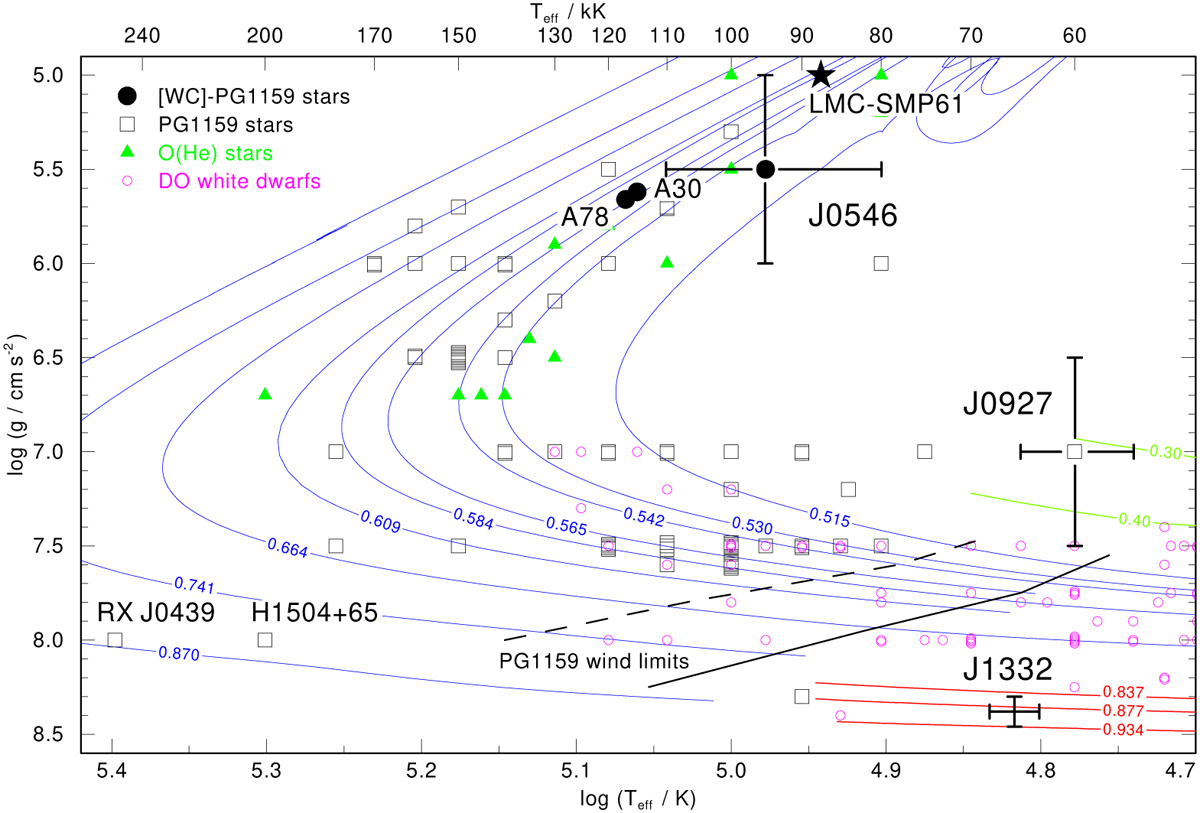Fig. 4

Download original image
Positions of the two C-O dominated stars J0546+0836 and J0927−6335 as well as the DAO WD J1332−3541 in the Kiel diagram, together with other hydrogen-deficient stars: PG1159 stars, O(He) stars, and DO WDs. A30 and A78 are [WC]–PG1159 transition objects. H1504+65 and RX J0439 are PG1159 stars that are He-deficient. LMC-SMP 61 is the [WC] central star discussed in the text. We show three sets of evolutionary tracks that could be representative of our program stars, labelled with the stellar mass in solar units: VLTP post-AGB stars (blue, Miller Bertolami & Althaus 2006) and WD coolings tracks of Bédard et al. (2020, green) and Renedo et al. (2010, red). The black line indicates the PG1159 wind limit according to Unglaub & Bues (2000), meaning that the mass-loss rate of the radiation driven wind at this position of the evolutionary tracks becomes so weak that gravitational settling of heavy elements is able to remove them from the atmosphere. Thus, no PG1159 stars should be found at significantly cooler temperatures. The dashed line is the wind limit assuming a ten-times-lower mass-loss rate.
Current usage metrics show cumulative count of Article Views (full-text article views including HTML views, PDF and ePub downloads, according to the available data) and Abstracts Views on Vision4Press platform.
Data correspond to usage on the plateform after 2015. The current usage metrics is available 48-96 hours after online publication and is updated daily on week days.
Initial download of the metrics may take a while.


